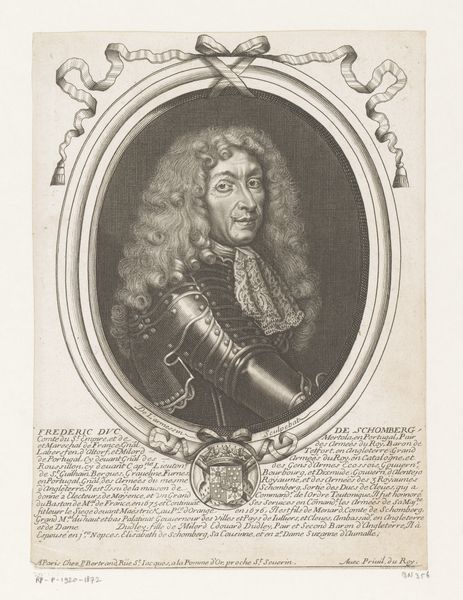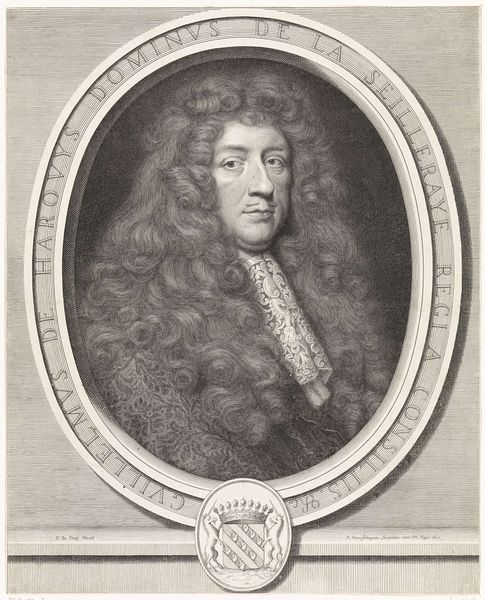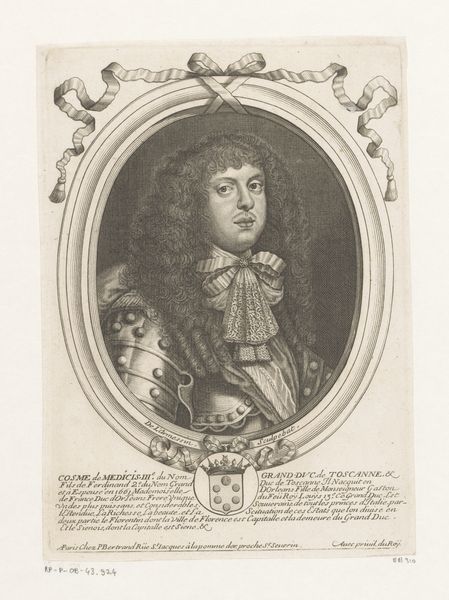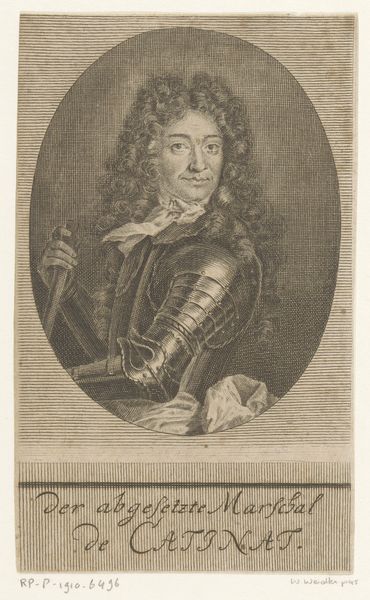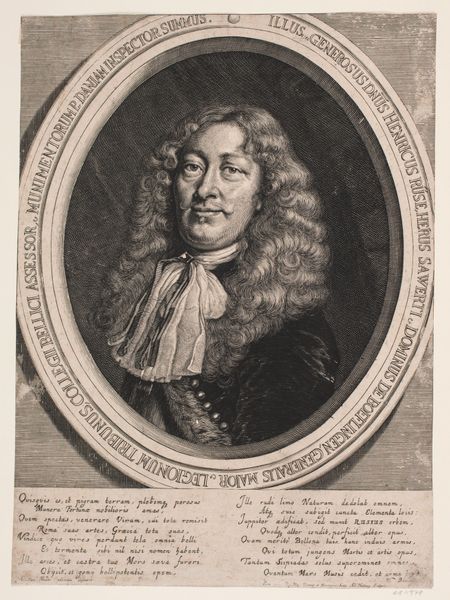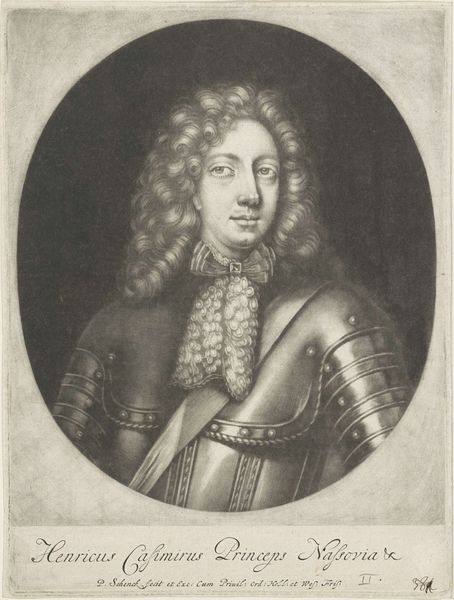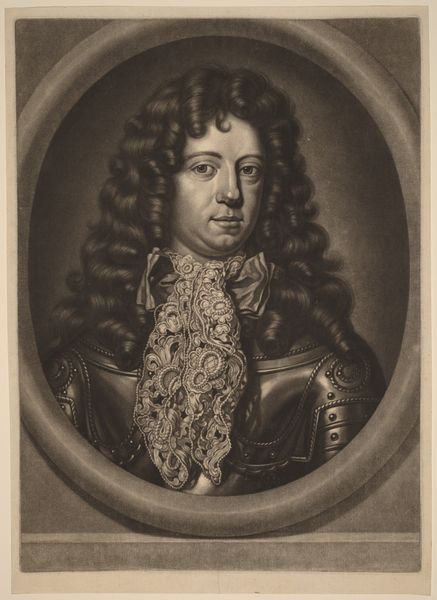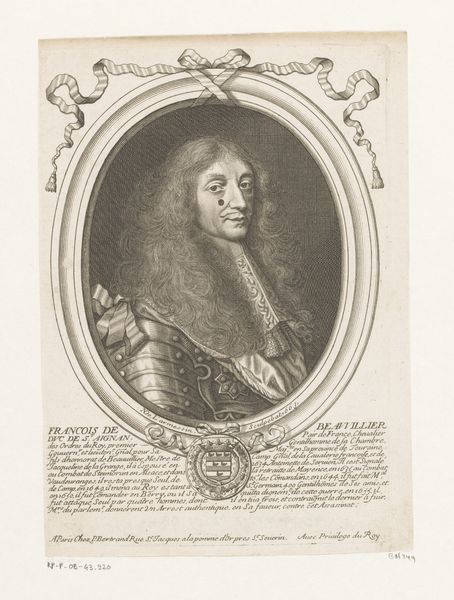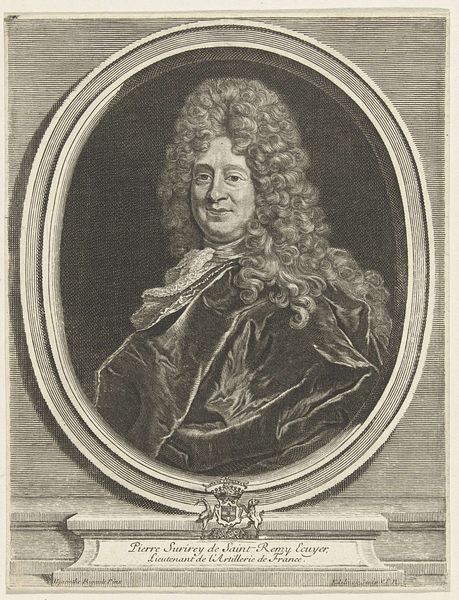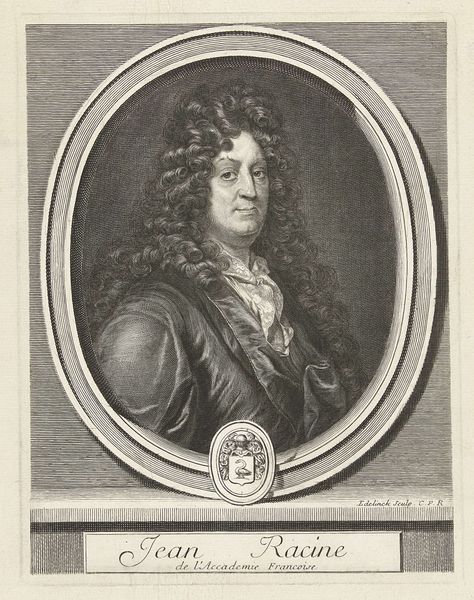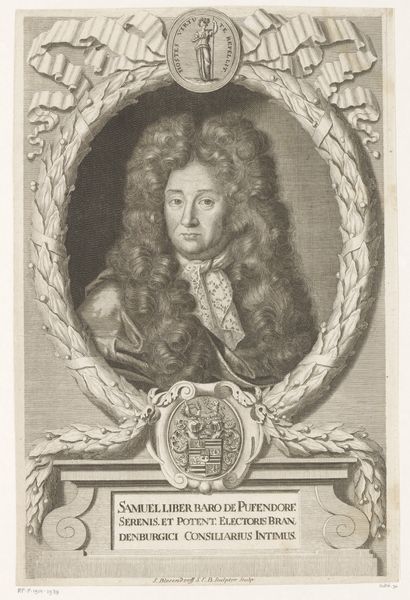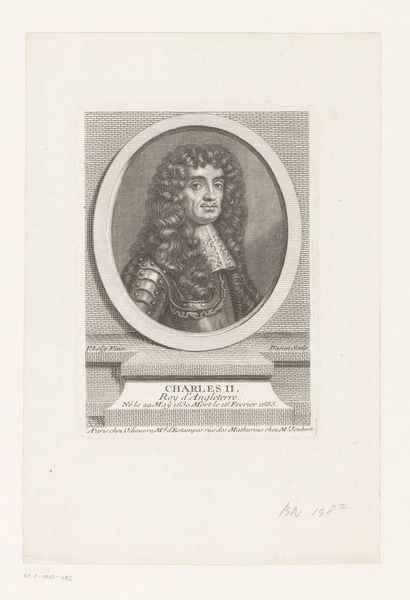
print, engraving
#
portrait
#
baroque
# print
#
old engraving style
#
portrait reference
#
portrait drawing
#
history-painting
#
engraving
Dimensions: 336 mm (height) x 245 mm (width) (bladmaal)
Editor: This is Albert Haelwegh’s "Prins Jørgen," an engraving dating from the 1660s. I'm immediately struck by the intricate details of the armor and wig, contrasted with the smooth, almost idealized face. What does this image communicate to you? Curator: It speaks volumes about the construction of power and identity in the Baroque era. The very medium—an engraving, a print—suggests dissemination, a desire to project a specific image to a broad audience. Haelwegh uses the visual language of aristocracy: elaborate clothing, a regal pose. But let’s think critically about this performance of masculinity and power. Who is the portrait designed to impress and what ideologies are at play? Editor: It seems almost propagandistic, aimed at solidifying Prince Jørgen's position. Curator: Precisely. Consider the context. The Baroque period was marked by significant social upheaval and religious conflict. Portraits like this were instrumental in reinforcing social hierarchies and legitimizing the authority of the ruling class. This portrait isn’t just about likeness; it’s about constructing a carefully curated image of leadership, perhaps masking any vulnerabilities. Editor: The texts below also imply his reputation. Was he trying to emphasize something about his lineage or valor? Curator: Indeed. Notice how Prince Jørgen is depicted not merely as an individual, but as a symbol of lineage and power. These images circulated, shaping public perception and contributing to the narrative of dynastic legitimacy. I wonder, to what extent does this image participate in or challenge existing notions of identity within the Danish court at that moment? Editor: That makes me look at it differently. I see the performative aspect of power much more clearly now, and the role the portrait plays in constructing it. Curator: And that’s the key—art isn't created in a vacuum. It is tied to social, historical, and political contexts that impact both the subject and viewer.
Comments
No comments
Be the first to comment and join the conversation on the ultimate creative platform.
